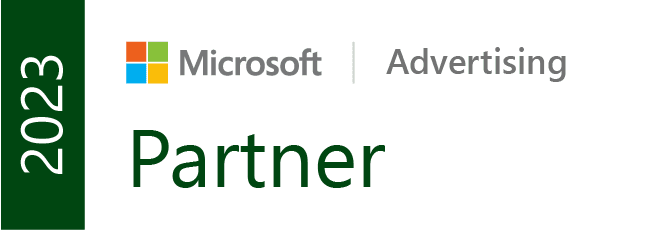Are you falling foul of focusing too much on fake KPIs? Discover what to do when your performance drops and your first instinct is to throw more traffic at the problem.
As the old adage goes:
"Half the money I spend on advertising is wasted; the trouble is I don't know which half"
Life as a Strategy Director (and analytics fan) is plagued with this situation.
As an agency we strive to base most decisions on evidence, supported by data and work tirelessly to ensure that we are tracking and reporting on the right metrics.
However, I have sat in countless briefings and been messaged by panicked clients about marketing metrics which have little bearing on the final outcome of success. I like to call them the red herrings. Those fake KPIs which are easy to obtain and grasp on to, but when you ruffle beneath the surface you discover that they have distracted you from the root cause of good and bad performance.
I'm going to share how I assess performance in a purposeful and pragmatic way.
You can tackle this problem top down, or bottom up. It really depends on your objectives and whether volume or efficiency is your number one priority.
For most clients it’s efficiency and cost effectiveness (bottom up), but for others where performance has been assessed over a number of years we have the luxury of looking beyond and scaling up to maximum volume (top down).
Regardless of starting point, I boil everything down to ‘quality.’
How does your business determine quality?
For e-commerce I expect it’s centred on margins and profitability so that when an item is sold the cost per acquisition or more likely return on investment is calculated and used to determine whether the marketing activity made or lost money.
"You could go one step further and consider the lifetime value of this customer, and accept initial losses if you can re-sell to the same customer at minimal cost in the future, but this requires good data housekeeping, a loyalty marketing approach, and good analysts."
For B2B it’s typically lead generation and qualifying leads based on likely outcome of working together (a sale) that receives most attention. Whilst many businesses focus on continuously filling the pipeline, fewer actually concern themselves with the conversion rate from lead to sale which in my opinion is the main indicator of quality.
"You are not alone if you are focusing your efforts on a metric which should be fairly easy to track online - someone filling in a form, or making a phone call (a lead). However, this is where I urge you to look a layer beneath and get to grips with assessing the quality of this lead. Unfortunately this takes a little bit of extra care to ensure your unique customer can be tracked through your pipeline steps, but it should save you money and angst in the long run."
Avoid the distractions of fake KPIs
I’m used to hearing conversations about traffic and/or leads being lower year-on-year without the context of why being shared or appreciated.
The immediate reaction of someone faced with this dilemma is to ramp up efforts to fill more into the top of the funnel, it’s logical, but it’s often futile (or not possible), and here is why.
Often in these situations there are perfectly reasonable explanations as to why the results they are referring to have dropped year-on-year, but that these drops should not negatively affect business performance. Conversations like these are fixated on traffic levels, and general enquiry figures, but often the businesses involved had implemented optimisation actions during the time frame which had whittled out wasted spend and thus naturally reduced traffic levels and leads in the pursuit of better efficiencies.
Looking ‘top down’ I can see why panic ensues, but this panic isn’t very conducive to delivering results. Time becomes wasted explaining why traffic levels have diminished or why leads have reduced, when in effect if you were looking purely on a like-for-like basis of the good stuff (or appreciating that the world had changed from 12 months ago, even a few weeks prior in some cases) you would see that performance hadn’t really changed at all for the good quality traffic. This same time could be invested in making positive movements forward by carrying on the path paved out in the strategy.
To avoid distractions like these, my advice would be to pick the metric that is your best starting point for judging good performance. This is unlikely to be traffic as it’s not a very good indicator of quality unless you have optimised to within an inch of its life, and is more likely to be an indicator like qualified lead.
To help you fixate on the most important metric, ensure on a daily, weekly, monthly basis that this metric is front and centre in your reports. It should almost be the first metric you see in a report, or at least given prominence with formatting. Everything else should cascade from this metric to help you work backwards or onwards to review whether changes at this level have been affected by pre-behaviour (impressions, clicks, leads) or could impact follow-on metrics like sales and revenue.
If you’re keen to go beyond vanity metrics like traffic and leads, and want to define your quality metrics then feel free to get in touch. We’d love to work with you to improve your data analysis and performance insights
Observe averages not absolutes
Then, the other metrics I like to centre some comparison behaviour on is calculations based on averages.
CTR, conversion rate, CPA and ROI remove the context of volume at first glance and help you determine if your ratios have changed - reductions here could spell more worrying conversations than a loss in traffic or leads.
Again work backwards, ROI first, then CPA, then conversion rate then CTR to appreciate where in the journey things have taken a turn for the worse or have affected the ratios due to a surge in weaker data.
Forecast with context in mind
When putting budgets together for a new financial year or campaign period take the time to consider what decisions you’ve already taken to improve performance to the point you’re at now.
Forecasting relies on good historical data, gut feel, and research - if you base your decisions on historical data think whether the status quo has changed over this time frame. Don’t base targets on last year’s performance if you’re planning on cutting out a source of traffic/leads which weren’t good quality; or you know that costs have increased due to inflation and you’ll be hard pushed to get back to last year’s levels.
Don’t be afraid to be ambitious with your targets, but I do implore you to be realistic with them. Attainable ambitiousness is possible, but if all the odds are stacked against you an ambitious target just sets everyone up for failure.
So the next time you see results not looking ‘normal’ centre yourself on the most important metric, and work outwards from there. Of course raise concern when everything is looking weaker, or rejoice if it’s all increased, but if the results are variable take a moment to consider whether the metric you’re concerned about really is the crux of the issue.





